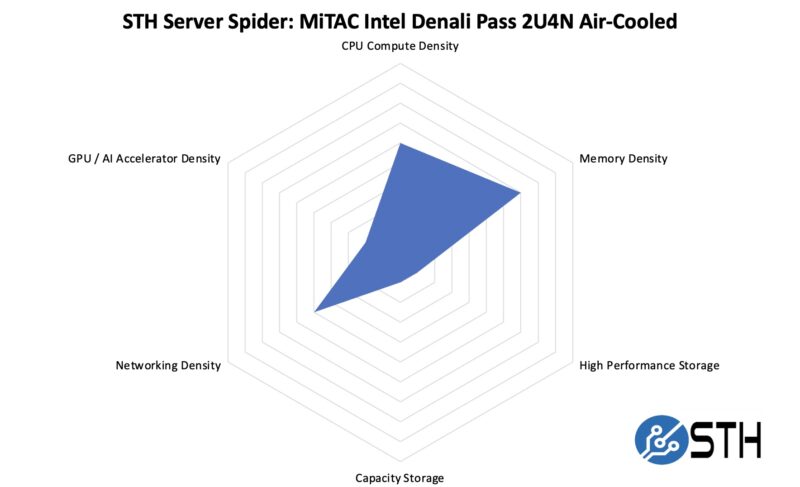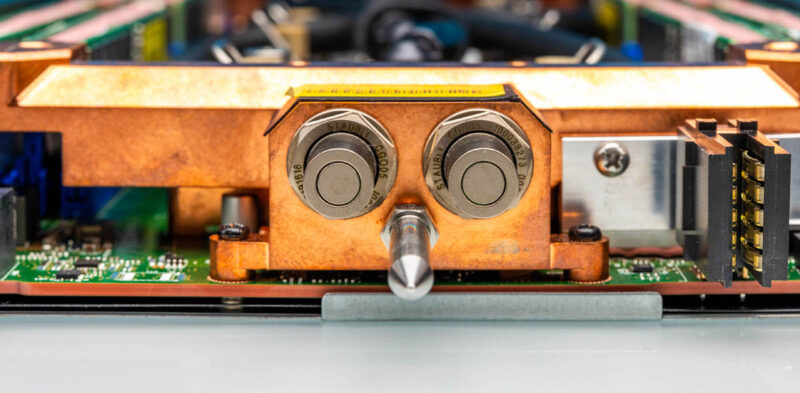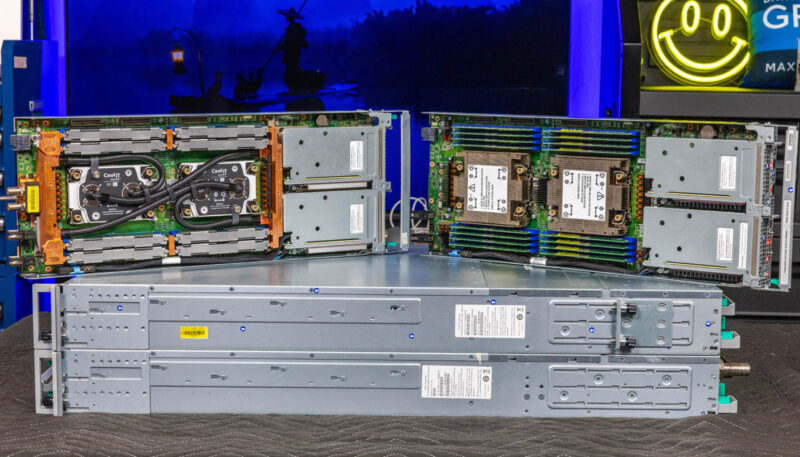MiTAC Intel Denali Pass High-End Liquid Cooled 2U 4-Node Power Savings
Let us chat a bit about the power consumption savings of liquid cooling. In modern servers, we see up to around 20% of power being used by fans for cooling. Normally a 10-14% savings by using liquid cooling is fairly good.

The MiTAC Intel DSG Denali Pass was much better in the 12% to almost 17% range depending on the configuration we tested. To be a bit fair here, since this was the only server node on our liquid loop at the time, it is not representative of what everyone might see. The power supply also changed between the two units so we had four 3kW PSUs instead of 2.7kW PSUs. Still, it feels like that range is reasonable, but these systems fully loaded even liquid-cooled will use 3kW+.

As we went over earlier, the bigger impacts of this are threefold:
- You can get higher density by using higher TDP CPUs in the same 2U 4-node design, and also using a 2U 4-node configuration instead of a 2U 1-node configuration.
- You can use the extra power in a data center to install more nodes and get more performance.
- You can run at the same performance and density but at lower power.
The somewhat strange thing about #1 above is that it means that there are certainly installations where liquid cooling raises the power consumption per node, especially if one chooses to take power and cooling benefits and use much higher TDP CPUs.
STH Server Spider: MiTAC Intel Denali Pass Liquid Cooled 2U 4-Node
In the second half of 2018, we introduced the STH Server Spider as a quick reference to where a server system’s aptitude lies. Our goal is to start giving a quick visual depiction of the types of parameters that a server is targeted at.

2U 4-node designs are normally dense in terms of CPU and memory. What this system lacks, however, is a lot of storage. On the liquid-cooled version, we get more TDP, which means more density.

This one adds both CPU and memory density. With higher TDP, we can add more cores. We can also add more memory since this supports Intel Xeon Max CPUs, making it one of the only ways to get a 2U 4-node CPU compute cluster with 512GB of HBM2e memory in addition to the DDR5 memory.
Key Lessons Learned
Since we just covered the power consumption savings, let us talk a bit about testing a system like this. It was awesome.

We have reviewed many liquid-cooled servers in the past, but the CoolIT setup here is top-notch.

There was so much cool here that even those 3000W liquid-cooled PSUs got their own article a few days ago.

The key lesson we want to impart to our readers is that it is not an accident that we got top-tier performance here. Adding two cold plates and using tubes out of a PCIe expansion slot is easy, especially if they are in serial. Inside the system, we have eight quick disconnects plus two outside. We have DDR5 cooling and even custom blocks for the motherboard components. There are other distribution blocks inside to ensure that components are being cooled efficiently and not being cooled by liquid that has been warmed significantly by other components.

Hopefully, close to 100 photos later, you can see why we focused this review on what was different with the liquid cooling. It is neat to think that even the air-cooled version used some neat concepts like having the internal chassis fans be swappable through the rear exterior of the chassis.
Final Words
Overall, there is a lot of really neat engineering going on in these systems. Of course, these are built for high-density compute which is why we get much of that extra engineering effort. When we first heard MiTAC bought Intel’s DSG business, we thought it might be just to get the customer list. After taking apart eight nodes and two systems, it is clear that the Intel DSG product line brings a lot of engineering expertise as well.

For STH readers and those on YouTube, we just thought this was really “cool.” We are going to have more on MiTAC in the coming weeks where we will take a look at some of the company’s other products.




It’s a work of art by former Intel guys. Unfortunately, no successors